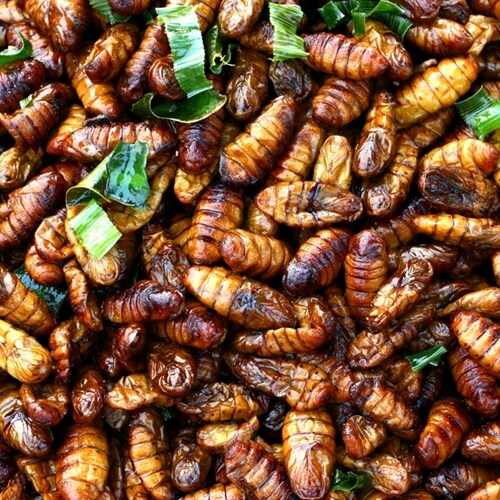Introducing insects into cuisine
There’s a few kitchen ingredients that serve as hallmarks of any dish: Eggs, butter and milk are the core of decadent cakes and hearty casseroles alike. Yet some chefs have added another item to their list of staples: Insects. That’s right, chefs everywhere are infusing creepy crawlers into standard recipes, and though this might move a few stomachs, bugs can be a great base for a true culinary delight.
Bugs are pretty yummy
The act of eating bugs is a long-running tradition in populations across the world: According to the IB Times, some 3,000 ethnic groups regularly consume bugs as part of their diets, including groups in Asia, Latin America and Eastern Europe. In fact, the Food and Drug Administration’s Defect Level handbook clearly outlines generally acceptable amounts of bug parts in most foods. For instance, canned fruit juice is allowed up to one maggot for every 250 milliliters, while there’s up to 100 insect fragments (head, legs or antennae) for every 25 grams of curry powder.
So, just why are bugs either allowed into our food or actively consumed? Because, as the Food and Agriculture Organization uncovered, edible insects are profound sources of daily nutrients. In the FAO’s report comparing insects to various other sources of protein, insects had decidedly much higher averages of protein across the board. For instance, where raw cattle averages 19 to 26 grams of protein, crickets and termites can be as high as 25 and 28 grams, respectively. And though catfish and mackerel had the highest possible average with 28 grams each, Mexico’s chapulines (grasshoppers) can contain up to 48 grams.
The added benefits of eating bugs
Beyond protein, insects have a number of other impressive benefits, according to Men’s Health. Researchers in Japan found that steady bug consumption can cut the risk of Type 2 diabetes by 33 percent. Crickets are also a major source of magnesium (up to five times as much as beef,) which can cut heart disease by 22 percent. Bugs not only improve health and well-being, but they’re even good for the environment, according to Deutsche Welle. Cattle release up to 170 kilograms of carbon dioxide, while mealworms release just 20 kilograms.
The art of cooking bugs
As is the case with many recipes, there is a specific way to cook each species of insect. Writing in the Huffington Post, self-described “edible insect advocate” Danielle Martin outlined five ways to cook crickets. That includes sautéing them with butter and olive oil, with the cricket at its optimal flavor content once it’s a light brown hue. Crickets are also ground up into a fine powder that’s mixed with flour for breads or as a seasoning for salads. If mealworms might be more your speed, the New York Times has a number of tips for preparing these tasty larvae. As a rule, mealworms are great at absorbing flavors; sautéing them in garlic will give the insects a similar taste. To ensure maximum absorption, let them sit for 24 hours and ensure to cook on low heat. Of all edible insects, though, ants may be one of the more versatile, according to VICE. Depending on the species, chefs have described ants as tasting like everything from grapes to lime and even soy sauce; regardless of flavor, many ant species are high in unsaturated fats. According to National Geographic, one popular approach is to eat roasted ants, which are even sold in bags like chips or popcorn across Europe.
One potential obstacle for chefs will be overcoming the stigma attached to eating insects. In a column in Nature, Ophelia Deroy said the best approach is to retool consumers’ perceptions. To that end, chefs may want to be careful in deciding colors and presentation, working to ensure actual bug parts are less of a focus. In addition, specific names also help: Though not an insect, sales of the Patagonian toothfish flourished after it was re-christened Chilean sea bass, according to Priceonomics.


